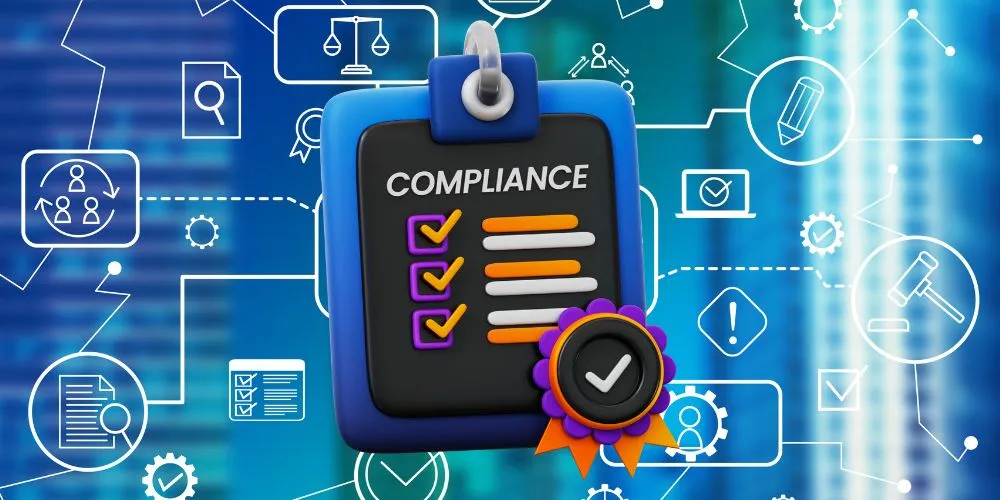In the ever-evolving world of business and technology, IT Compliance has emerged as a critical practice that ensures organizations adhere to regulations, standards, and industry guidelines related to information technology. This article delves into the significance of IT Compliance, its role in maintaining digital integrity, and the challenges and benefits it offers in the dynamic landscape of regulatory requirements.
The Essence of IT Compliance
IT Compliance refers to the adherence of an organization’s information technology practices, processes, and systems to various regulations and standards. These regulations encompass many areas, from data security and privacy to industry-specific requirements such as healthcare or finance.
In a world where data breaches and cyber threats are rising, IT Compliance is a vital safeguard ensuring organizations handle data responsibly and ethically.
The Role of IT Compliance
In a landscape where data breaches can lead to financial losses, legal liabilities, and reputational damage, IT Compliance plays a pivotal role in upholding digital integrity. It ensures that organizations follow established guidelines, best practices, and legal requirements for IT operations.
- Data Security: IT Compliance mandates measures that safeguard sensitive information from unauthorized access, ensuring that customer data and proprietary information remain protected.
- Regulatory Requirements: Many industries are subject to specific regulations that govern how data is collected, stored, and transmitted. IT Compliance ensures organizations meet these requirements to avoid legal penalties.
- Risk Management: By adhering to IT Compliance standards, organizations minimize the risk of data breaches and cybersecurity incidents, protecting their reputation and financial stability.
Challenges and Benefits of IT Compliance
While IT Compliance offers substantial benefits, it also presents challenges. One challenge is the complexity of navigating a landscape of constantly evolving regulations. Organizations must stay current with changing laws and standards to ensure compliance with their IT practices.
Additionally, achieving IT Compliance requires a collaborative effort between IT teams, legal departments, and other relevant stakeholders. Effective communication and coordination are essential to ensure all aspects of IT operations are in line with compliance requirements.
Benefits of IT Compliance
There are several benefits of IT compliance; some of them are below.
- Legal and Financial Protection: IT Compliance safeguards organizations from legal liabilities and financial penalties resulting from non-compliance with regulations.
- Enhanced Reputation: Demonstrating commitment to IT Compliance enhances an organization’s reputation, as customers, partners, and stakeholders trust organizations that handle their data responsibly.
- Data Protection: IT Compliance measures protect sensitive data from cyber threats, minimizing the risk of breaches and unauthorized access.
Navigating the Regulatory Landscape
IT Compliance must adapt to new challenges as the business and technology landscape evolves. Here are three strategies to enhance IT Compliance efforts:
- Regulatory Intelligence: Stay informed about changing regulations and industry standards by establishing a process for tracking updates and assessing their impact on IT operations.
- Cross-Functional Collaboration: Foster collaboration between IT teams, legal departments, and other relevant stakeholders to ensure a comprehensive approach to IT Compliance.
- Continuous Improvement: Regularly review and assess IT Compliance practices to identify areas for improvement and ensure ongoing adherence to standards.
Conclusion
IT Compliance is the compass that guides organizations through the intricate terrain of regulatory requirements and digital responsibility. As data breaches continue to create headlines and regulatory bodies tighten their grip on IT practices, the role of IT Compliance becomes increasingly significant. By adhering to regulations, following best practices, and upholding digital integrity, organizations can navigate the complexities of the regulatory landscape with clarity and purpose.
IT Compliance emerges as a catalyst for ethical digital practices in a world where data security and privacy are paramount. As technology evolves and organizations grapple with new compliance challenges, those prioritizing robust IT Compliance practices will be better equipped to protect their data, maintain trust, and position themselves for success in the dynamic landscape of information technology.










